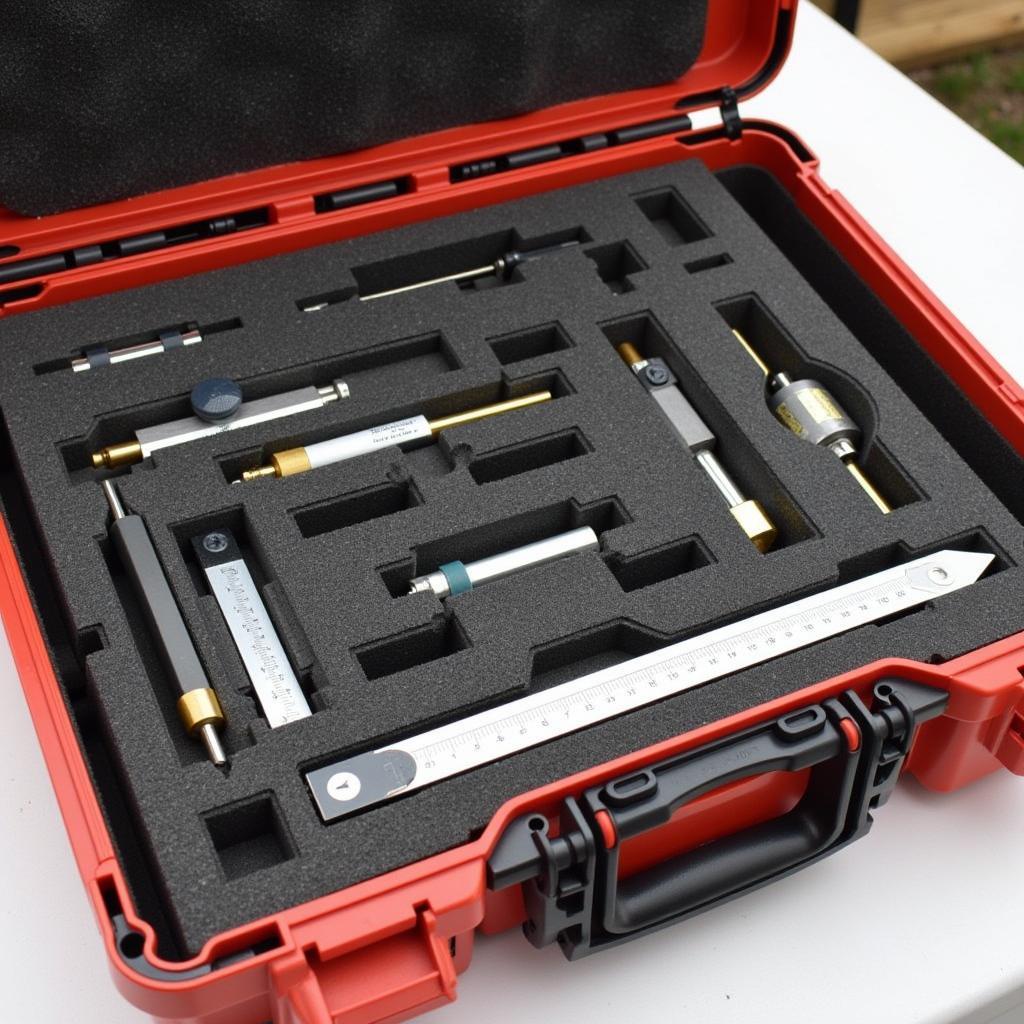Marking out tools are essential for precision and accuracy in any project, whether you’re a professional mechanic or a DIY enthusiast. Proper Care And Maintenance Of Marking Out Tools ensures their longevity and consistent performance, saving you money and frustration in the long run. Learn how to properly care for your marking out tools to ensure they remain reliable for years to come.
From scribers and dividers to center punches and height gauges, each marking out tool plays a crucial role in achieving accurate measurements and layouts. Neglecting their upkeep can lead to inaccuracies, damaged workpieces, and even safety hazards. This comprehensive guide will delve into the best practices for care and maintenance of marking out tools, covering everything from cleaning and storage to specific maintenance tips for different tool types. You can also check our guide on uses and care of drafting tools and equipments.
Why is Care and Maintenance of Marking Out Tools Important?
Maintaining the accuracy and reliability of your marking out tools is paramount for successful project outcomes. Accurate markings are the foundation of precise cuts, fits, and assemblies. By implementing a regular care and maintenance routine, you’ll not only extend the lifespan of your tools but also improve the overall quality of your work. For further information on sharp tool maintenance, see our guide on how to care and maintain sharp tools and drawing equipments.
How to Clean Marking Out Tools
Cleaning your marking out tools after each use is the first step in preventing corrosion and maintaining their accuracy. Use a soft cloth or brush to remove any debris, metal shavings, or oil. For stubborn residue, a mild solvent can be used, but ensure it’s compatible with the tool’s material.
- Scribers and Dividers: Wipe down the points and legs with a clean cloth after each use.
- Center Punches: Remove any metal shavings from the tip and wipe clean.
- Height Gauges: Clean the base, column, and slider with a soft cloth and lubricate the moving parts.
Proper Storage of Marking Out Tools
Proper storage protects your marking out tools from damage and corrosion. Store them in a dry, clean environment, preferably in a toolbox or dedicated storage area. Consider using tool organizers or foam inserts to keep them separated and prevent them from rubbing against each other.
Protecting from Rust and Corrosion
Rust and corrosion can significantly impact the accuracy and functionality of marking out tools. Applying a light coat of oil to metal surfaces after cleaning can prevent rust formation. For tools with moving parts, like height gauges, regular lubrication is essential.
 Marking out tools organized in a toolbox with foam inserts.
Marking out tools organized in a toolbox with foam inserts.
Specific Maintenance Tips for Different Tool Types
While general cleaning and storage practices are essential, certain tools require specific maintenance procedures.
- Scribers: Sharpen the point regularly using a fine sharpening stone to maintain its sharpness and accuracy.
- Dividers: Check the tightness of the pivot joint and lubricate it periodically.
- Height Gauges: Regularly calibrate the gauge to ensure accurate measurements.
“Regular calibration of your height gauge is often overlooked, but it’s crucial for maintaining its accuracy,” advises John Smith, Master Machinist at Precision Engineering Inc. “Even slight deviations can lead to significant errors in your work.”
Troubleshooting Common Issues
Sometimes, despite proper care, marking out tools can encounter issues. Understanding common problems and their solutions can save you time and effort.
- Dull Scriber: Sharpen the scriber using a sharpening stone.
- Sticky Divider Joint: Clean the joint and apply a drop of lubricant.
- Inaccurate Height Gauge: Recalibrate the gauge following the manufacturer’s instructions. You might find some useful tools on our page about car body tools.
Conclusion
Care and maintenance of marking out tools are vital for ensuring accuracy, longevity, and overall project success. By following these simple yet effective practices, you can keep your tools in top condition, improving the quality of your work and saving you money in the long run. Remember, a little maintenance goes a long way in preserving the precision of your essential marking out tools. Are you looking for specific car tools? Check out our page about tools needed to change thermostat on 98 lincoln town car.
FAQ
- How often should I clean my marking out tools? Ideally, after each use.
- What type of oil should I use for lubrication? A light machine oil is recommended.
- How often should I calibrate my height gauge? It depends on usage frequency, but a good practice is to calibrate it every few months or before critical projects.
- What should I do if my scriber breaks? Depending on the severity of the break, it might be repairable, but often replacement is the most cost-effective solution.
- Where should I store my marking out tools? A dry, clean environment, preferably in a toolbox or dedicated storage area.
- Can I use WD-40 on my marking out tools? While WD-40 can help remove rust, it’s not ideal for long-term lubrication.
- How do I prevent my dividers from becoming stiff? Regular cleaning and lubrication of the pivot joint are key.
For further assistance or inquiries, feel free to contact us via WhatsApp: +1(641)206-8880, Email: [email protected], or visit us at 910 Cedar Lane, Chicago, IL 60605, USA. Our customer service team is available 24/7. Explore our other helpful articles on DiagFixPro for more valuable information and tips on car diagnostics and tool maintenance. You might find useful information on our page about car ac tools for sale.

Leave a Reply